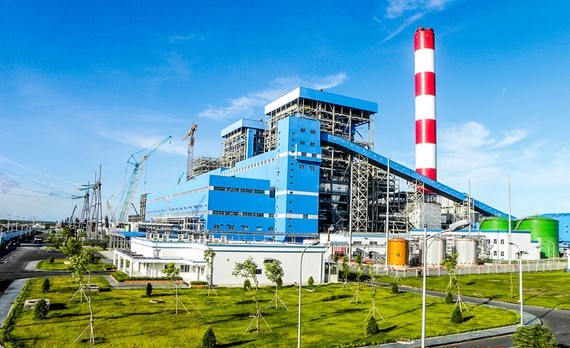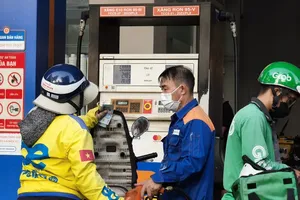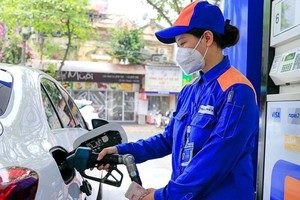
Mr. TRAN VIET NGAI, Chairman of the Vietnam Energy Association, spoke with Saigon Investment on steps to take to lower carbon emissions, while remaining committed to its agreement and continuing to ensure energy security in the short and medium term.
JOURNALIST: - Sir, how will Vietnam's commitment at COP26 influence our energy plan, especially for our coal fired power plants which generate a majority of our electric power?
Mr. TRAN VIET NGAI: Vietnam pledged on several important initiatives at COP26, such as building no further coal fired plants, protecting forests, using land appropriately, and participating in the Adaptation Action Coalition. Vietnam made a commitment to join hands with other countries in reducing carbon emissions to zero by the year 2050.
This is the global target, but our coal fired electric energy makes up a big part, upto almost 50% of our electric power supply. This indicates that we must try to get rid of coal fired electricity gradually, rather than do so immediately. We need to restructure our energy industry, but we must secure our energy needs for economic growth. Most importantly, coal can now guarantee the stability of our electricity all the year round, by upto 7,000 hours per year, or even 8,000 hours per year. So far we have not developed another alternative.
In fact, we are far behind other countries in industrial development. In the pre-industrial period, countries used old technologies. Our input fuel is coal bran of 6% and 7% with low efficiency and high percentage of waste coal, and lots of dust and smoke, together with gases containing CO2, SO2, NOx, etc. At the moment, developed countries still use large amounts of electricity, like the USA uses upto 400,000 MW and Germany uses over 370,000 MW.
Vietnam's demand for electricity is now not as high as that in the Philippines or Thailand. When it comes to coal fired electricity and its reduction, we need to put it in an overall context. From now till 2030, Vietnam will still need to maintain coal fired electricity at about 40%, before trying to seek another alternative source of energy. Currently, we are increasing advanced technology for coal fired electricity generation. We no longer use fluid bed furnaces, but instead, we are using supercritical boilers with very high calorific value and special bran coal.
- Sir, some experts and officials have recently said that coal fired power plants can use liquefied gas in place of coal because this is a potential source, while some plans for construction of gas powered plants have been approved. What do you think about this?
- I don't think the proposal is feasible enough in practice because we currently do not have a liquefied gas plant capable of meeting the needs of all the gas fired power plants throughout the country. High price of imported fuel for gas fired power plants would raise the price of electricity and consumers would not accept it. If companies operating gas fired power plants could not negotiate an acceptable price, they would suffer a possible loss of thousands of billions of Vietnamese dong a year.
Actually, two years ago, the Son My LNG 2 Project in the South Central province of Binh Thuan was approved by the Ministry of Industry and Trade (MoIT) allowing the US Company AES to invest VND93,000 bn, or US$4 bn in the project. It was considered to be the biggest gas fired power plant, but it is still pending today. Also, several provinces like Long An, Ha Tinh, Quang Nam, Quang Ngai and Ba Ria-Vung Tau are trying to choose investors for their gas fired power plants after saying no to coal fired power projects. There are also other gas fired power projects which have been planned by Vietnam Electricity (EVN) and PetroVietnam (PVN). A rough estimate could show dozens of billions of US dollars expected to be poured into gas fired power projects in the near future.
The Power Development Plan VIII completed and submitted by MoIT to the Government does not include adding coal fired power projects, indicating that the issue of gas fired power projects has been the hottest ever. The proportion of gas fired power projects in Power Development Plan VIII have increased substantially. Among them, nine gas fired power projects will certainly be built, and expected to be put in operation between 2020 and 2025, with a total capacity of 6,500 MW. Most of them have EVN and PVN as investors. They are Dung Quat Projects 1, 2 and 3; Central Region's gas fired power projects 1 and 2; Quang Tri gas fired Power Project; and O Mon gas fired Power Projects 2, 3 and 4. So far, however, most of the projects have been delayed, or even remain merely on paper.
The progress of the projects has been slow mainly because initial investments are very high, further raising the electricity price and making them unacceptable to the consumers, and electricity producers are also very likely to suffer losses. EVN's rough estimate shows that gas fired power generated by Block B gas would have to be sold at an average of VND2,800 per kWh while the price of electricity generated by LNG would depend on LNG prices, expected to be VND2,000 per kWh, with LNG price at the plant estimated to be about US$10.5 per million BTU. This is rather high.
- Sir, what do you think of the possibility of nuclear power development in Vietnam in the future?
- In 2009, we had planned to construct two nuclear plants in Ninh Thuan Province at an estimated cost of a few billion US dollars. In 2016, the National Assembly turned down this proposal because of several problems such as high costs, lengthy construction time, safety issues, fuel treatment and power production hassles. In the long run, however, I believe that nuclear power will undoubtedly be included in the country's national electricity planning portfolio if Vietnam wants to reach the goals of lowering carbon emissions, while still ensuring national energy security and sustainable economic growth.
- Thank you very much.
























